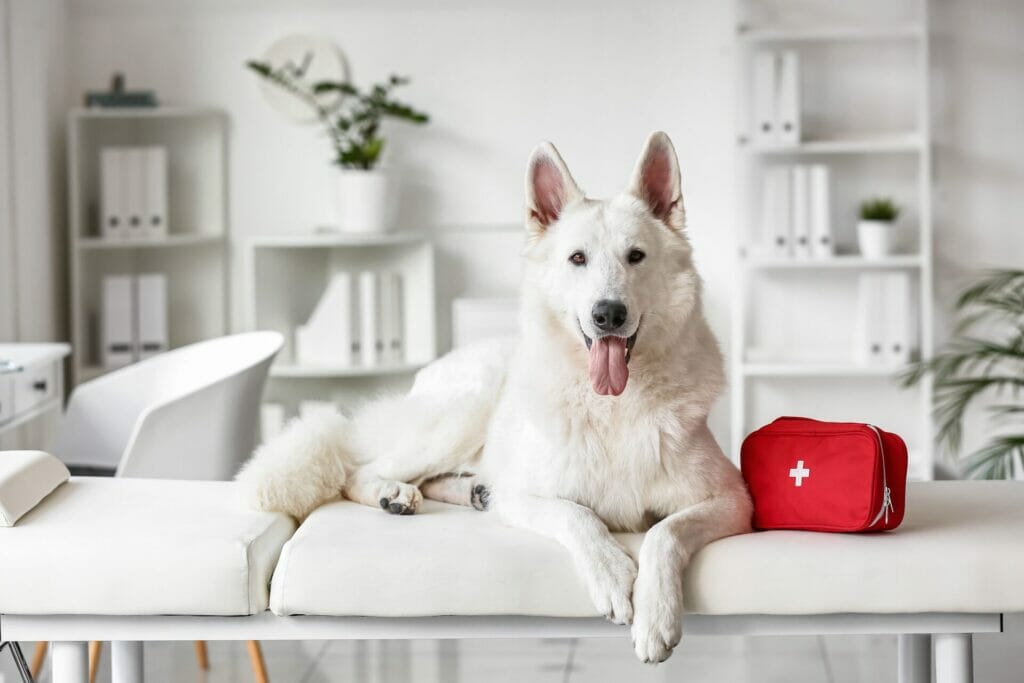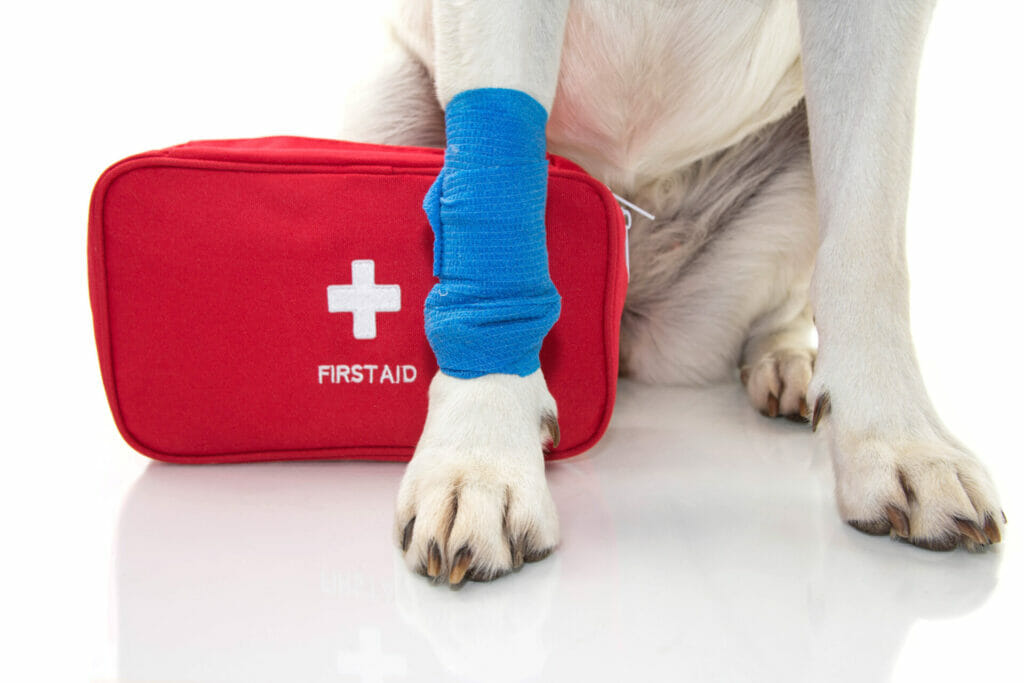As a pet owner, it is important to be ready for any emergency that may arise with your pet. Emergencies can strike at any time, whether you are at home, around town, or traveling. When they do occur, dog owners should always have a K9 first aid kit and basic supplies. A well-stocked first aid kit can help you handle any situation, whether a minor or more severe, until you can get your dog to immediate veterinary care.

Pet First Aid Kit Essentials to Pack
If you are an experienced traveler, you likely have a human first aid kit or a box of first aid supplies. However, if you take your pets along, it’s important to ensure your kit is stocked with items more specific to their needs.
The exact items to include in your first aid kit will, of course, depend on the activities you do with your pet. There are some essentials, however, that every owner should readily have on hand. Based on different activity levels and interests, here is a helpful list of pet first aid kit must-haves:
A Flashlight
A flashlight helps when examining wounds in low-light situations and finding your way in the dark. Flashlights also make any aid administered much easier.
Gauze pads, Non-stick bandages, and Adhesive tape
These handy items are crucial for wrapping and securing minor wounds and stopping bleeding. Make sure to have a variety of bandages and sizes available. Lightweight, latex-free white medical gauze is a key first aid item to have around in the event of an injury. Self-adhesive bandage material and water-repellent bandages work well on dogs without sticking to their fur.
Antiseptic Wipes
Cleaning a wound is a critical step in preventing infection in any animal. Antiseptic wipes (or solution) can be used to clean the area around a wound before dressing it and seeking veterinary treatment.
Hydrogen Peroxide
This is a must-have item for inducing vomiting if your dog ingests something toxic. However, please note that you should only induce vomiting under the direction of a veterinarian.
If you think your pet may have ingested a potentially poisonous substance, call the ASPCA Animal Poison Control Center (APCC) at 1-888-426-4435.
Sterile Saline Solution
This can be used to flush out wounds and help keep them clean. A sterile saline solution is used to wash, flush or rinse parts of the body (e.g., wounds). It can also help stop bleeding, even with a torn toenail.
Paw Protection
Enjoy outdoor adventures with your dog? Do you let your pet outside in the snow, ice, or rain? Make sure to remember some paw protection items! Just as you put on appropriate footwear to keep your feet from getting cold and wet, weather protection booties can help protect your dog’s paws on walks in winter from salt, cold, or other types of inclement weather. If your dog does not tolerate footwear, you can also use paw balm for protection and damage prevention. While you are taking steps to protect your pet’s paws, be sure to check their paws regularly for signs of wear, injury, or stuck debris. Keep in mind that even indoor-only pets can still sustain paw damage.
A Thermal Blanket and/or Towel
A blanket help keep pets warm, provide comfort and serve as a makeshift stretcher in an emergency. A towel comes in handy for any messes and creates a soft surface to rest your dog.
A Digital Thermometer
It is important to monitor your dog’s temperature, especially if they are ill or injured. Be ready with the right tools. Digital thermometers are easy to use on pets and can be found at most pet supply stores.
Normal body temperature for dogs and cats is 101.0 to 102.5°F (38.3 to 39.2°C). Some people and some pets maintain a baseline temperature a little above or below the average, but if your pet’s temperature rises above 104°F (40.0°C) or falls below 99°F (37.2°C), take your pet to your Veterinarian.
Tweezers
Tweezers are essential to any first aid kit, particularly if you enjoy hiking or other outdoor activities. The safest way to remove a splinter or a tick is with a clean pair of tweezers. Disinfect the tweezers with alcohol well before and after each use. Tweezers can remove splinters, thorns, or other foreign objects from your dog’s skin or paws.
Benadryl
Benadryl is considered safe for dogs and cats when given in small, appropriate doses. When used correctly, the medication can help reduce the effects of allergic reactions in pets.
Before administering any Benadryl to your cat or dog, ensure you only give your pet the original or generic version (diphenhydramine) that does not contain any other active ingredients. Never give your pet an “enhanced” version like Benadryl Allergy Plus. It is also crucial to talk with your veterinarian ahead of time about what a safe dosage is for your particular pet’s size and breed. Keep the information written down in your first aid kit for easy reference.
Even if medications appear to have little effect on your pet, it is important to never increase your veterinarian’s recommended dose in order to prevent overdose. Remember, you should always consult your veterinarian before giving an animal any new medication, even an over-the-counter one like Benadryl.
A Manual
A pet first aid manual can provide you with helpful information on how to handle various emergencies, how to perform CPR, and other life-saving measures.
An Extra Leash
Add an extra leash or a small slip lead to your first aid kit. A slip lead can act as both a collar and a leash. If you ever take your dog to daycare, the vet, or the groomer, you are often given one for free. Save them and add one or two to your kit. Stocking up on supplies is always a good idea.
Documents and Phone Numbers
Always remember to include important paperwork in case of an emergency, including a copy of your pet’s medical records, vaccination records, and any necessary emergency phone numbers.
Remember: always check your dog’s first aid kit regularly to make sure all the supplies are in good condition and replace anything that may have expired or become damaged. Practicing first aid techniques can also help you feel more confident and able to handle the situation in case of an emergency with your pet.




















